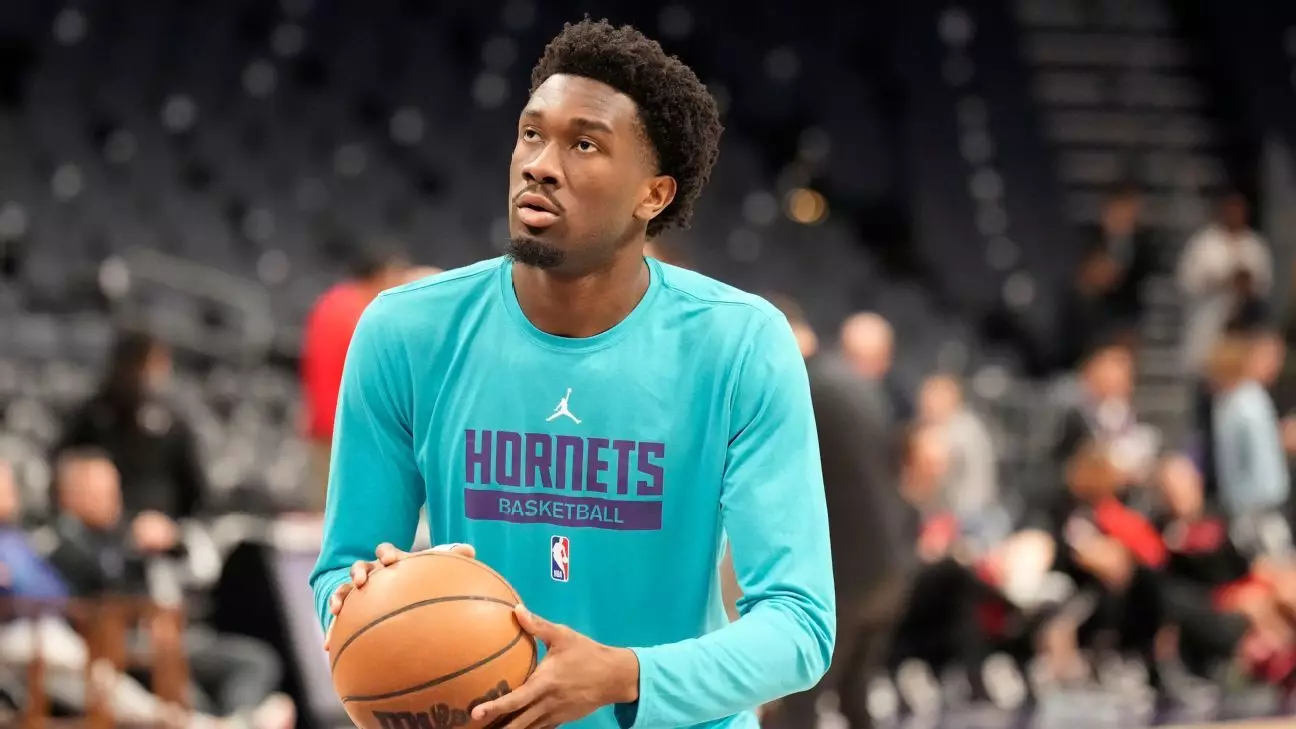The Los Angeles Lakers have made significant changes to their roster as of late, marking a pivotal week in the franchise’s history. The acquisition of center Mark Williams from the Charlotte Hornets represents not only a move to secure a promising young talent but also an evolving strategy aimed at bolstering their championship aspirations. In a high-stakes trade ahead of the deadline, the Lakers dealt rookie Dalton Knecht, Cam Reddish, and two valuable draft picks, showcasing their commitment to a win-now philosophy while laying down a foundation for the future.
Mark Williams, a 7-foot-0 center weighing 240 pounds, comes to Los Angeles with significant potential. He has averaged 16 points, shooting an impressive 59.7%, and nearly 10 rebounds per game during his current season with the Hornets. His blend of size and mobility positions him perfectly as a lob threat—a crucial role sought by the newly acquired star Luka Doncic. The Lakers’ management appears to have keenly analyzed the requirements of their high-profile player and tailored their strategy accordingly. Doncic, known for his court vision and playmaking abilities, reportedly expressed a need for a center that can enhance his offensive effectiveness and provide vertical spacing at the basket. This proactive approach underscores the Lakers’ responsiveness to their roster needs and illustrates a commitment to team chemistry.
The relationship between Williams and Lakers head coach JJ Redick is another interesting aspect of this deal. Having played together at Duke University, their prior connection can facilitate a smoother integration of Williams into the Lakers’ system. Mentorship is a key component in sports, and having a coach with whom a player has an established rapport can accelerate development and foster a competitive atmosphere.
The Lakers’ decision to part with key rotation players—most notably, Anthony Davis—raises questions about their strategic direction. While some may see it as a gamble, L.A. is clearly balancing the present with future potential. Acquiring Doncic and now Williams indicates a shift towards a younger, dynamic roster while still keeping the veteran presence of LeBron James. This duality in strategy could yield dividends as James continues his remarkable longevity in his 22nd NBA season. The front office’s aggressive trading stance has ostensibly painted the Lakers as both a team in a transitional phase and one still adhering to a win-now mentality.
Williams’ prior injury history, having played in only 84 out of a possible 212 games since his entry into the league, raises some concerns regarding his availability. This fragility could impact the Lakers’ immediate plans. Nevertheless, reports indicating confidence in his medical evaluations suggest that the front office believes in his capacity to contribute effectively moving forward. The Lakers continue to possess a second-round pick that could bolster the squad further ahead of the deadline, positioning them favorably to pursue additional talent in the buyout market. The expeditious trade to clear a roster spot signals that the Lakers are not finished tweaking their lineup.
With Williams in tow and the operational flexibility afforded by Knecht’s departure, the Lakers are poised to address other areas of need, particularly in playmaking and 3-point shooting. Knecht’s early-season performance, highlighted by his knack for hitting multiple 3-pointers in games, revealed a promising skill set. However, the Lakers appear undeterred, focusing on optimizing their roster for deeper playoff runs.
The Lakers’ recent trade illustrates a calculated approach to roster construction, acknowledging the necessity of adapting to emerging trends in modern basketball while remaining true to their storied legacy. As the organization navigates this transformative period, one thing remains clear: the Lakers are not merely looking to stay competitive; they are aiming to reclaim their status as a championship contender. The moves made this week stand as a testament to the franchise’s ambition and its recognition of the fast-evolving landscape of the NBA. In consolidating talent and committing to a synergistic roster, the Lakers have positioned themselves for both immediate success and long-term prosperity.

